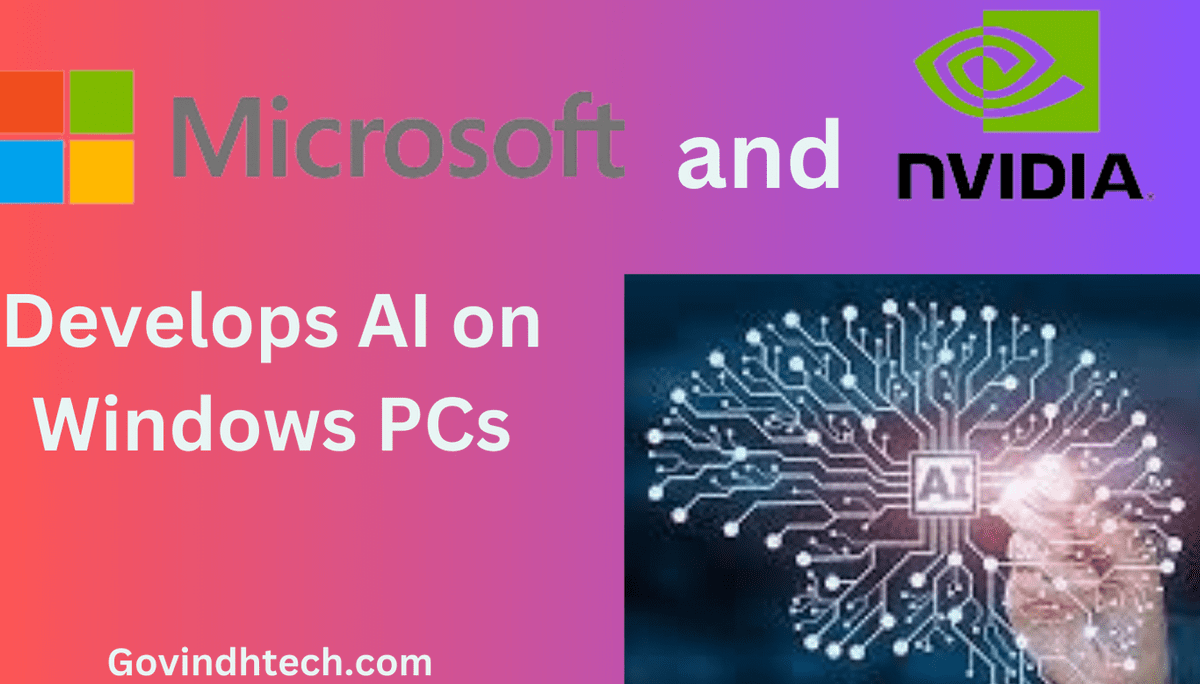NVIDIA and Microsoft are teaming up to revolutionize the capabilities of Windows 11 PCs and workstations with NVIDIA RTX GPUs, harnessing the power of generative AI. With over 400 Windows apps and games already employing AI Innovation, the collaboration aims to empower developers to build the next generation of Windows apps with generative AI at their core. The partnership between NVIDIA and Microsoft represents a significant advancement in integrating potent AI capabilities into the Windows ecosystem.
This collaboration has the potential to transform workflows and user experiences, opening the door for a time when artificial intelligence is smoothly incorporated into daily computing. The advancements showcased at the Microsoft Build developer conference include AI development tools, optimization frameworks, driver performance improvements, and efficiency enhancements, providing a transformative and high-performance AI experience.
Seamless AI Innovation with Windows Subsystem for Linux
Microsoft’s Windows Subsystem for Linux (WSL) allows developers to run Linux directly within the Windows OS, eliminating the need for dual-booting or using multiple PCs. NVIDIA has worked closely with Microsoft to deliver GPU acceleration and support for the complete NVIDIA AI software stack within WSL. This means developers can now leverage their Windows PCs for AI development, utilizing GPU-accelerated deep learning frameworks on WSL.
With the powerful NVIDIA RTX GPUs offering up to 48GB of RAM in desktop workstations, developers can work with models on Windows that were previously only available on servers. The increased memory capacity also enhances performance and quality for local fine-tuning of AI models, enabling designers to customize models to their own style or content. Additionally, developers can easily transfer their models to Microsoft Azure Cloud for large-scale training runs.
Optimization and Deployment of AI Models
After training AI models, developers need to optimize and deploy them efficiently. Microsoft has released the Microsoft Olive toolchain, enabling the optimization and conversion of PyTorch models to ONNX format. This allows developers to tap into GPU hardware acceleration, including RTX Tensor Cores, for improved performance. The seamless integration of PyTorch, related tools, and frameworks with WSL ensures a superior AI model development experience.
Improved AI Performance and Power Efficiency
The inference performance of generative AI models is crucial once they are deployed. NVIDIA’s RTX Tensor Cores deliver exceptional performance with up to 1,400 Tensor TFLOPS for AI inferencing. Recent improvements in DirectML performance have fully utilized the capabilities of RTX hardware.
NVIDIA’s latest optimizations in the Release 532.03 drivers, combined with Olive-optimized models, offer significant AI performance boosts. For example, the Stable Diffusion text-to-image generator experiences over 2x performance improvement with the new driver. NVIDIA is also introducing Max-Q low-power inferencing for AI-only workloads on RTX GPUs, optimizing Tensor Core performance while maintaining low power consumption, thus extending battery life and ensuring a cool and quiet system.
Joining the PC AI Revolution
Top software developers, including Adobe, DxO, ON1, and Topaz, have already integrated NVIDIA AI technology into over 400 Windows applications and games optimized for RTX Tensor Cores. The collaboration between NVIDIA and Microsoft has resulted in significant performance gains and enhanced user experiences. Developers can explore top generative AI models on Windows PCs, such as the Olive-optimized version of the Dolly 2.0 large language model available on Hugging Face, and a PC-optimized version of the NVIDIA NeMo large language model for conversational AI coming soon. Resources and guidance on optimizing applications for GPU acceleration can be found on the NVIDIA AI for accelerating applications developer site.
The partnership between Microsoft and NVIDIA brings together the strengths of the Windows platform and NVIDIA’s dynamic AI hardware and software stack, enabling developers to seamlessly develop and deploy generative AI on Windows 11. With AI driving the future of innovation, this collaboration empowers developers to create groundbreaking applications that leverage the power of generative AI.


[…] Microsoft and NVIDIA Driving AI Innovation for WindowsThe Future of Gaming is Here: GeForce RTX Graphics on Smartphones […]
[…] You may Also like Microsoft develops AI for windows […]
[…] or not to install the Xbox software). Importantly, none of the built-in safety precautions that Microsoft has added in tiny11 23H2 have suffered any kind of harm in any form. This is a very positive […]